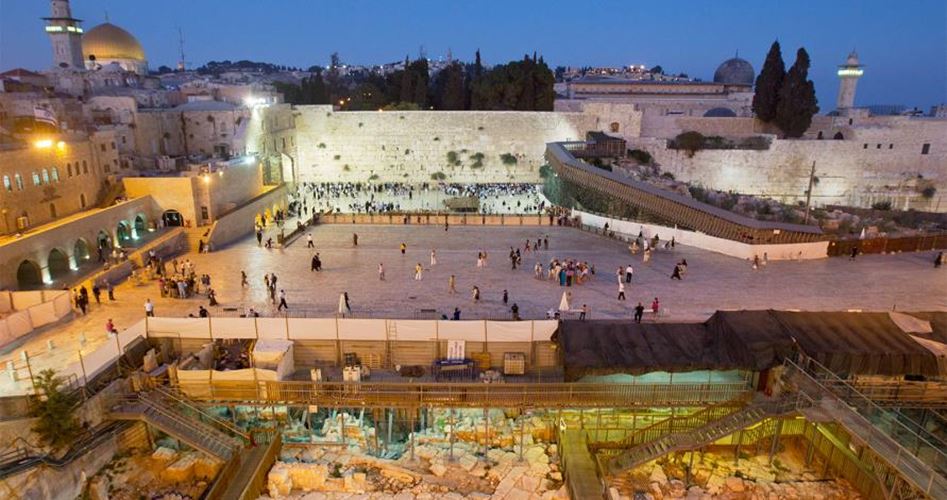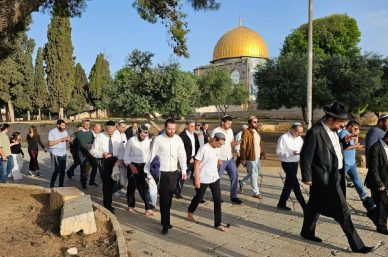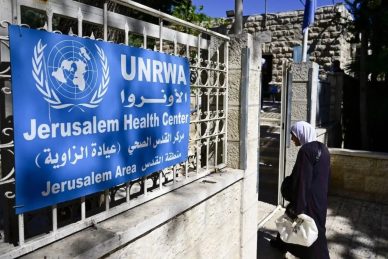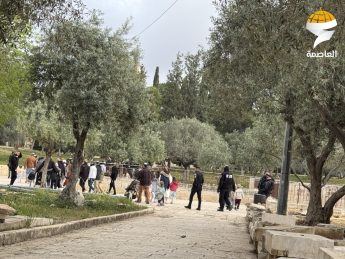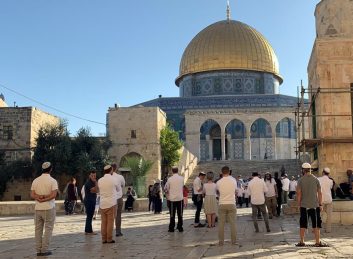The Israeli occupation with its political security military and intelligence arms continues to carry out its plans against Al-Aqsa Mosque in order to realize building the so-called Jewish Temple.
Perhaps the most dangerous project is the approval of the Israeli occupation of a plan to expand the arena opposite to the western side of the wall of Al-Buraq which is part of the wall of Al-Aqsa Mosque that has been recognized as such by an international committee over almost a century ago following pressures from the office of the Israeli Prime Minister Benjamin Netanyahu.
Yusuf Al-Natsheh Director of Archeology and Tourism at the Islamic Waqf confirms that the new Israeli plan to expand the area of Al-Buraq Wall is a big and dangerous settlement project that was presented five years ago by the office of the Israeli Prime Minister with some of its details already revealed during the past years noting that it was really a huge project.
Different-phases projects
He added to the PIC reporter that the danger lies in the fact that these projects are implemented through different phases including the Straus Building the House of Halva as well as other buildings outside the walls of the Mughrabi Gate behind the Umayyad palaces known as the Givati Building.
“We are seeing the implementation a series of projects linked to each other to change the features of the region and the holy city. The most dangerous plan is of two phases in Al-Buraq Wall area. The first of which links the Mughrabi Gate with the Jerusalem Wall with the northern boundary of the wall where Al-Tankazia School is located just next to the entrance of the western tunnel. This arena will be for services and parking restaurants buses and transportation and the upper area of it is a large prayer area that is parallel to Al-Aqsa Mosque. Al-Natasha described it as the largest Judaization project ever and is being implemented in the Old City of Jerusalem. The most dangerous project whether in terms of expansion of Al-Buraq Square and the Reform Judaists building is that secret plan regarding the Umayyad palaces and the entrance of the Mughrabi Gate and excavations and tunnels that no one knows how to get into or out of.
Al-Natsheh pointed to the seriousness of the plan regarding the Arab and Islamic narrative about Jerusalem as well as their presence in Jerusalem and Al-Aqsa Mosque and the surrounding areas where the Israeli occupation is planning to implement this huge project to serve the Israeli and Jewish narrative about the holy city of Jerusalem.
He adds: “We know that there is a serious activity and excavations in addition to tunnels but we cannot learn its details without entering there and examining their danger to Al-Aqsa Mosque. We rely on reports and leaks as well as connecting some of the dots and information we get from press reports about what is going on in the vicinity of the Mosque.”
He pointed out that the area of Al-Buraq Square is a space attached to Al-Aqsa Mosque which is of great importance in terms of neighboring sites an extension of the Mosque and its architectural development both during the Arab and Islamic periods or even before.
Archaeological remains
Al-Natsheh explains that the archaeological remains of the different historical eras in the Mughrabi Gate and the area of Al-Buraq Square have been revealed which were not as expected by the Israelis.
He added: “The region is historical that is dating back to the Roman and the Arab Islamic eras including the remains of Umayyad palaces highlighting the history of the Islamic civilizations in the prosperous times in Jerusalem. This includes the Ayyubid era where the architecture of the Afdalayia School and Waqf buildings highlights the greatness in in that area all the way to the Moroccan Neighborhood an area closely linked to the history of the city and Al-Aqsa Mosque and its architectural development.
Historical importance
Al-Natsheh pointed to the historical architectural and cultural importance of the Buraq Wall and what surrounds it of bustling life and the religious and heritage emotions revealed by many historical documents that are preserved in the records of the Islamic Court which includes describing life of the residents as well as their emotional connection to the place. This area has been targeted by Israel for a long time.

